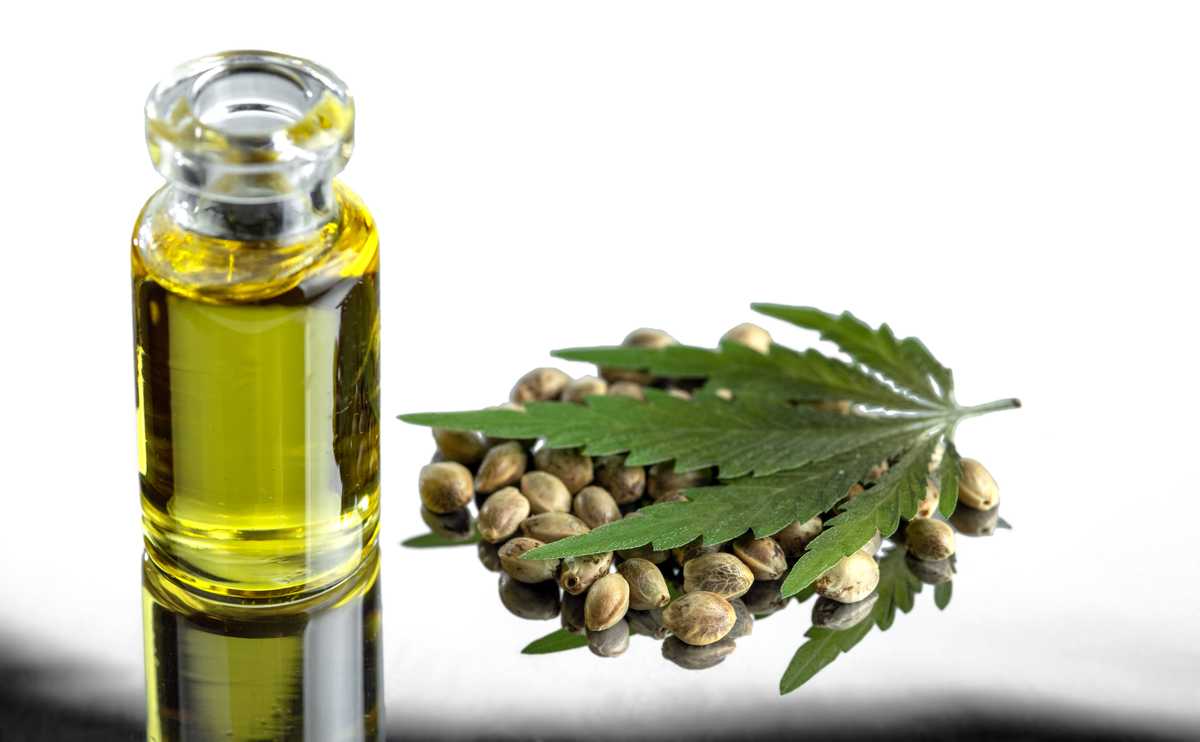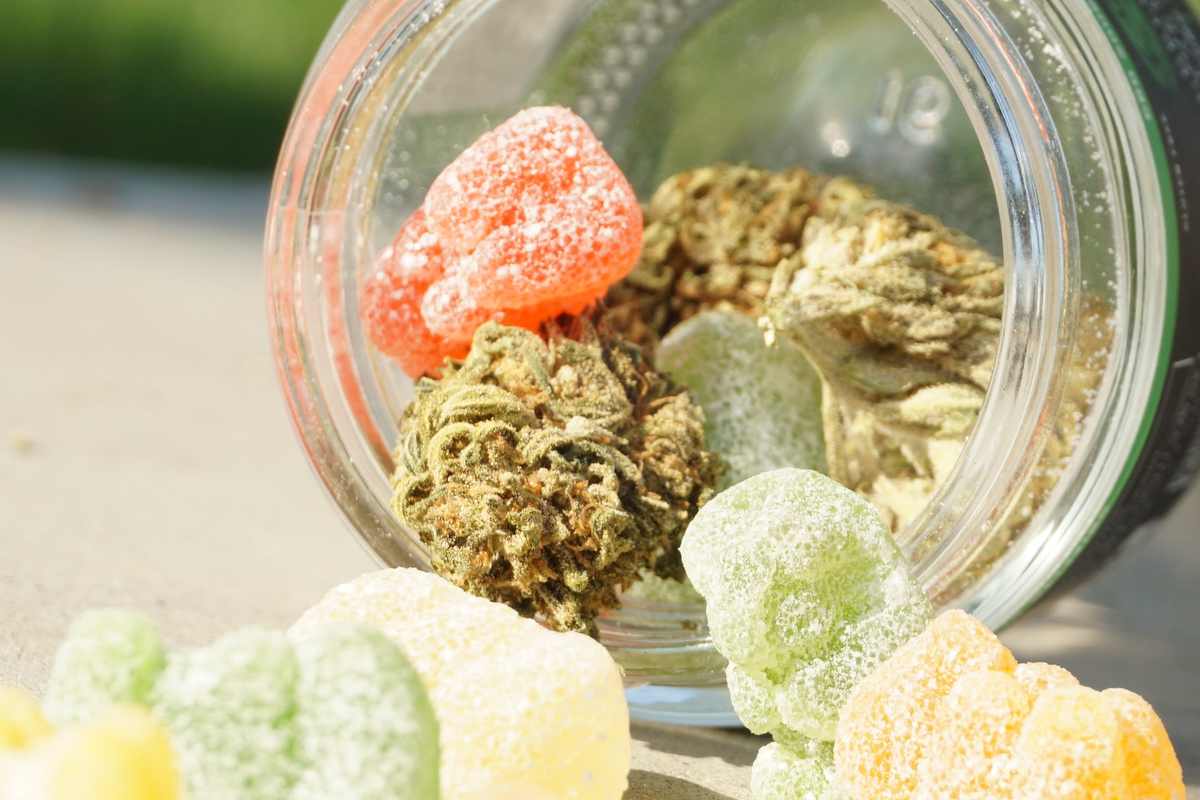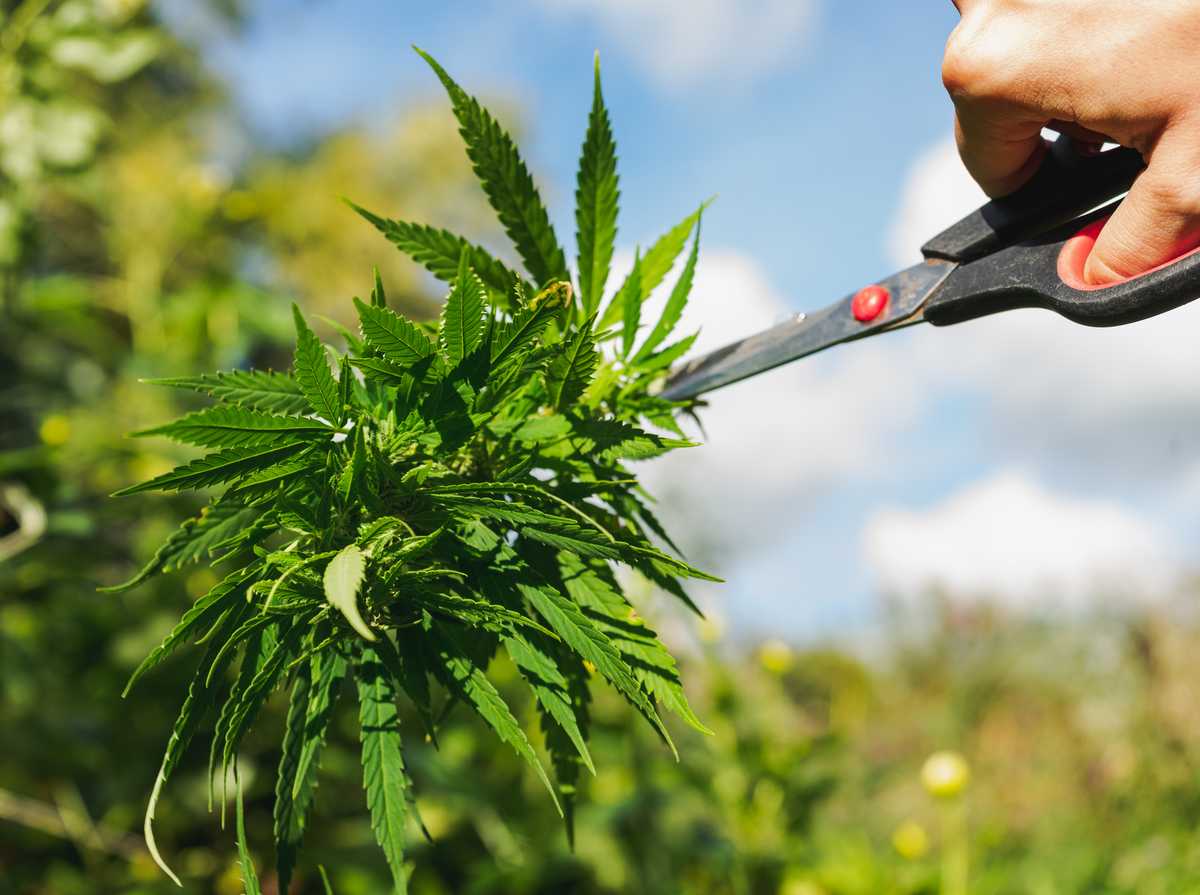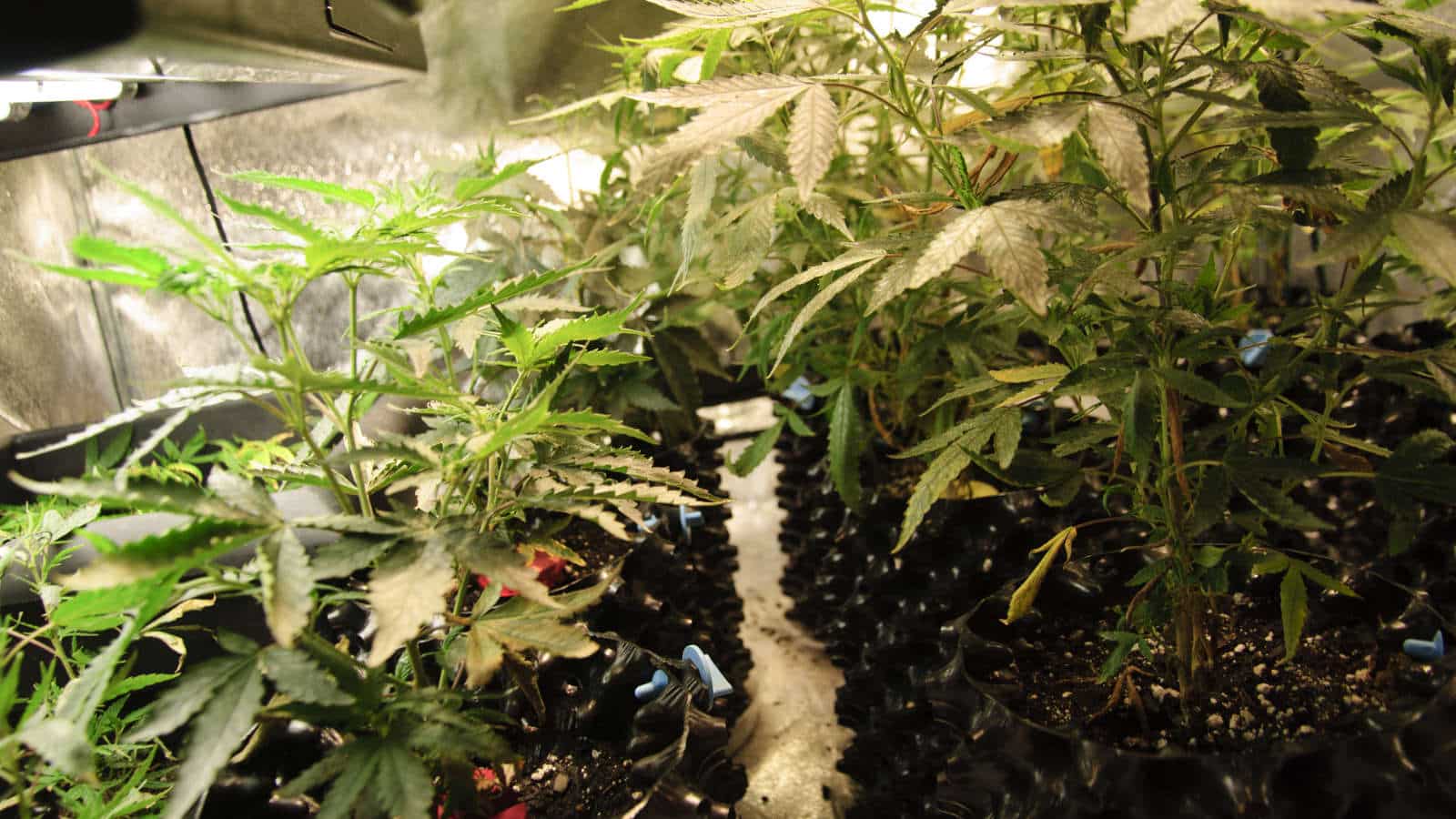
How To Prevent and Fix Nutrient Deficiencies In Australia!
- Macro VS Micronutrients
- Mobile vs immobile nutrients
- pH Matters
- Growing Organic Cannabis Plants
- How to prevent and solve nutrient deficiencies
- Nitrogen
- Phosphorous
- Potassium
- Calcium
- Sulfur
- Magnesium
- Iron
- Manganese
- Boron
- Molybdenum
- Zinc
To get the best quality cannabis harvests with the highest yield, you need to prevent nutrient deficiencies in your plants.
Growing marijuana plants might sound easy, but there’s a learning curve that can be easily solved by understanding how to fix cannabis nutrient deficiencies.
Cannabis crops expect a nutritious and diversified diet. This article will provide you with complete information on preventing all the nutrient deficiency problems you may encounter in Australia.
A quick solution to fix any nutrient deficiency situation you encounter when growing cannabis plants.
Table of Contents.
Macro VS Micronutrients
One of the major minerals that growing cannabis plants call for in a considerable quantity is Macronutrients. These comprise of Potassium, Phosphorus, and Nitrogen.
Similar to the balanced diet of human beings, which contains ample amount of carbohydrates, proteins, and fats; even cannabis crop balanced diet should include their favourite vital minerals in sufficient amounts to carry out their key developments.
Along with macronutrients, a supplement of minerals and micronutrients in smaller quantities is also necessary.
Conversely, even though the intake of these micronutrients is very low, their requirement is necessary for the complete growth of the plant. Easy to overlook, but a lack of micronutrients may cause issues with the overall yield of your cannabis crops if you ignore.
Micronutrients comprise of Zinc, Sulphur, Boron, and Iron, and various other items. Remember, you can compare these vital elements with the human diet, though they don’t require as much as us, without these elements, the plants will get sick, and their growth will be stunted.
Mobile vs immobile nutrients
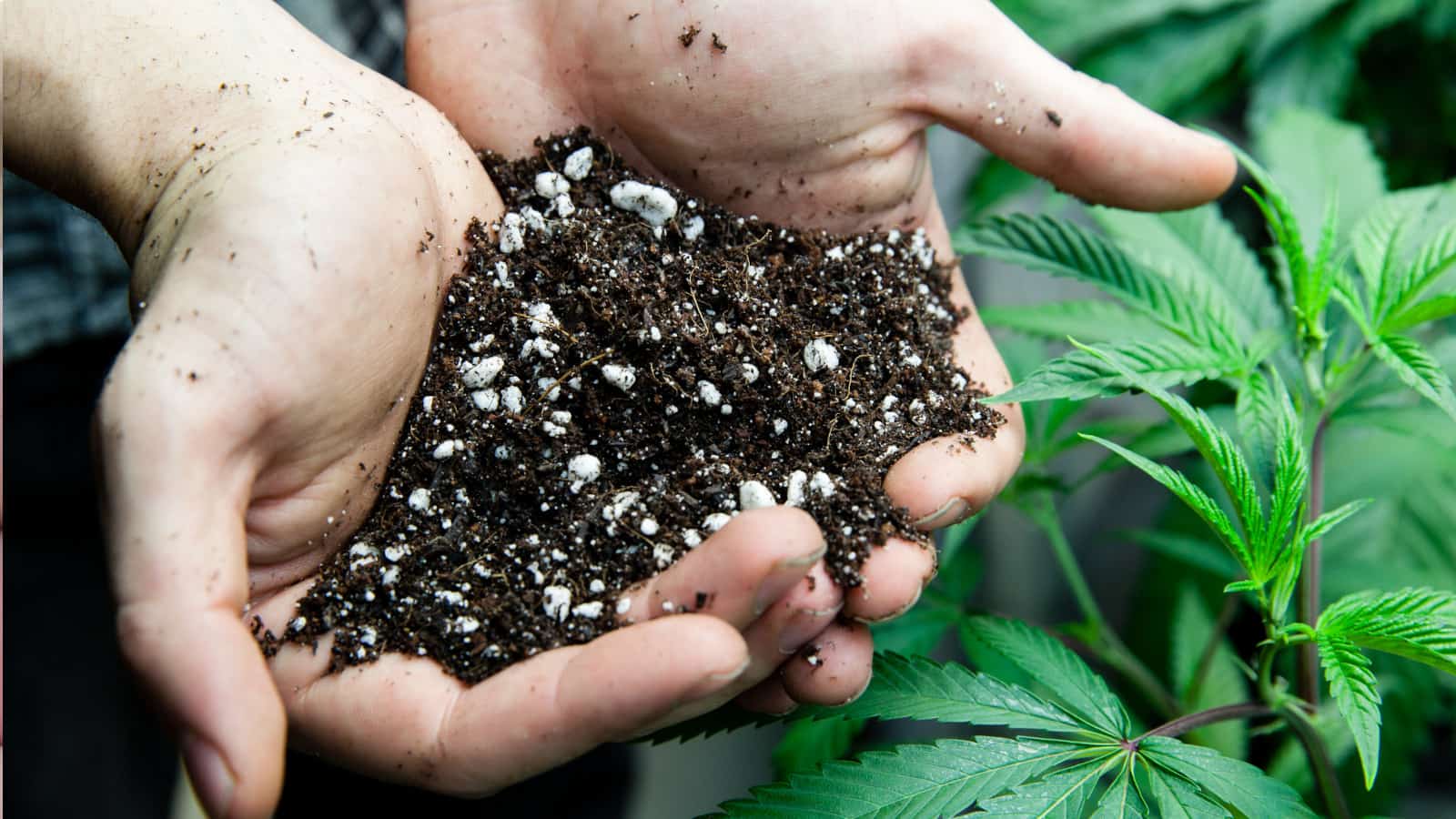
There are different behaviours that nutrients have in the cannabis plant. Cannabis crop growers will analyse their plant’s health and nutrient intake, and they will take different actions to fix nutrient deficiencies depending on whether its mobile or immobile.
Mobile Nutrients
Just as it sounds, mobile nutrients are able to move through the cannabis plant. Mobile nutrients are transported through the cannabis plant to areas where they are needed.
If the new plant is deprived of phosphorus, then, most of the phosphorus deposited in the older fan leaves can be transported towards the deficiencies of newer leaves.
Immobile Nutrients
Immobile nutrients are stuck in the place they are found and cannot be relocated to other areas of need.
If there is a zinc deficiency, the effect will be seen in the newer parts of the plant. This is due to the plant’s inability to relocate the zinc from the older parts of the plant to the newer parts.
pH Matters
pH is a measure of acid v/s water percentage, and it is one of the most common and regular tests you will do on your soil to maintain a healthy balance of nutrients.
Soil is capable of holding all the nutrients within, which are required for the plant’s growth. But, your plant cannot access these nutrients if the optimal pH factor is missing.
You can get a flourishing yield if the soil composition has a pH factor ranging from 6.0 to 6.5. In case this percentage goes above the range, or falls below, your plant will starve. This situation where a cannabis plant is starved from vital nutrients is known as Nutrient Lockout!
With the help of pH Meter, you can keep track of all the values to maintain a balance in the soil. If required, you can always alter the pH (water acidity) of your topsoil using various other methods.
Growing Organic Cannabis Plants
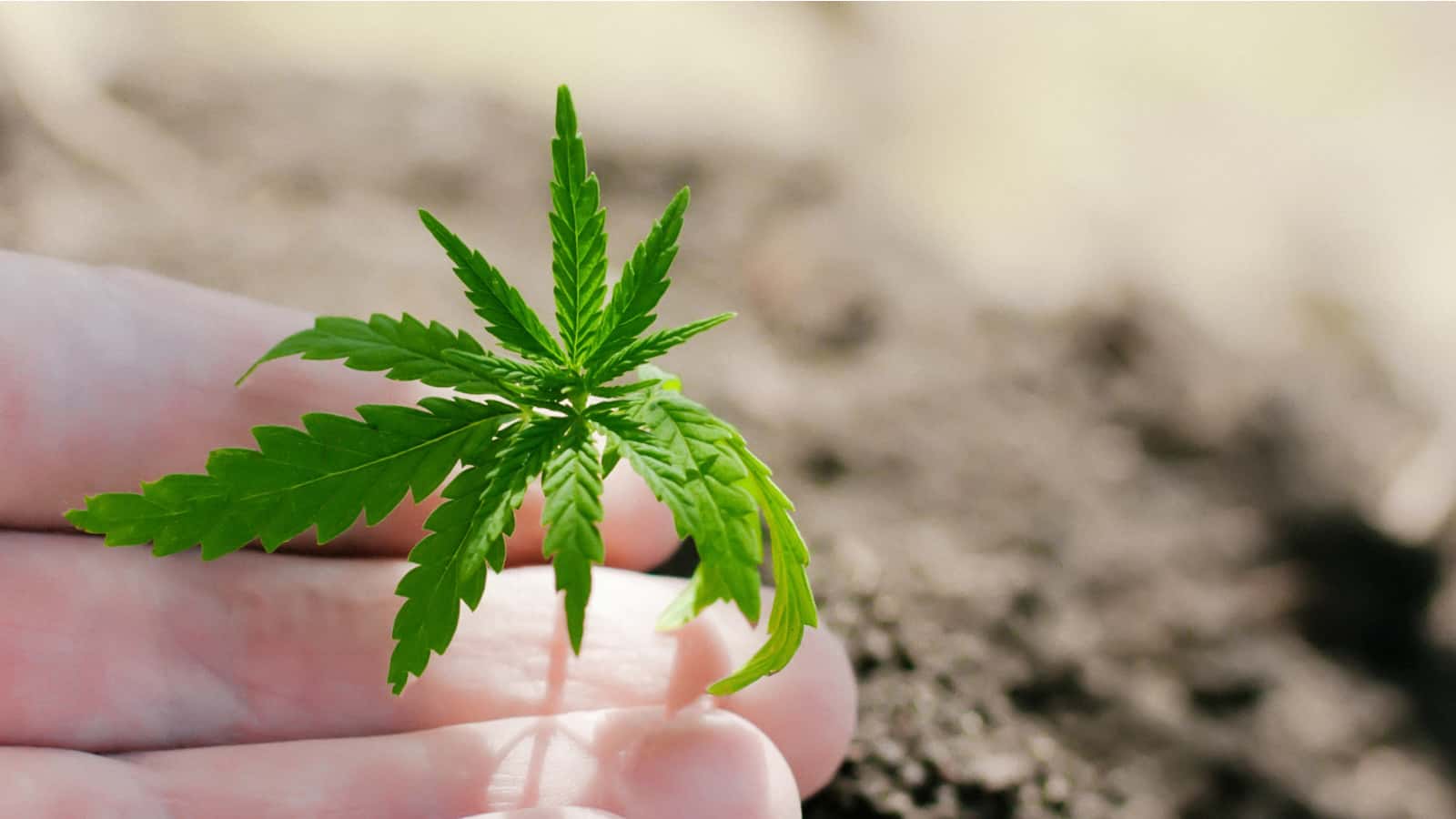
Growing organic cannabis plants is more than just a buzz-word. Since toxic PGR weed has flooded Australia’s cannabis market, more and more people are searching for a safer and more organic way to grow.
Contrary to popular beliefs, organic cannabis can have higher yields and produce more THC and CBD content in their flowers than chemical-based cannabis plants.
So what does organic cannabis look like? It’s all in the soil and how you provide nutrients to your plant.
Research and scientific studies in soil science have confirmed that the rhizosphere , the adjacent area of plant roots that influences plant respiration, growth, and nutrient transfer, aka Root Zone is full of life.
In the root zone of your plant, a highly complicated grid of microbes works in symbiosis with the plant root arrangement.
One essential requirement for organic soil for cannabis to grow in is a well-adjusted usage of Fungi and Bacteria. The Fungi and Bacteria help disintegrate the organic material, which releases vital nutrients that your cannabis plant needs to grow.
Concentrating on the latest methods like composting & creating Living Soil ensures a stable supply of nutrients. This supports biodiversity in the interiors of the rhizosphere. These advantages will always provide a high-quality harvest.
Outside of the soil, you can provide nutrients to your cannabis plants by applying fertilisers directly onto the plant leaves, which is termed as Foliar Spraying. This allows you to manage nutrient deficiencies where they are needed most on your plant.
Foliar Sprays avoids the roots and focus on applying nutrients to the leaves directly.
How to prevent and solve nutrient deficiencies
Here is the list of all the nutrients deficiencies that might arise during the cannabis plant’s growth. We have incorporated different ways of preventing and fixing common deficiencies for your benefit!
Nitrogen
This is one of the most vital mobile macronutrients that are required for the overall growth of the plant.
It facilitates the creation of essential plant proteins and helps photosynthesis.
Cannabis nitrogen deficiency is easy to spot as the leaves will lose their green colour and turn yellow; especially the older leaves, and eventually drops off the branch. If not fixed in early stages it will affect the entire harvest.
How To Prevent Nitrogen Deficiency
- Watering acidity, i.e. pH factor should be within the range of 6.0 to 7.0, which is an ideal range for the betterment of the plants
- The potting mix at the start should include high nutrients. This consists of the three main common ingredients - peat moss, vermiculite, and pine bark
- Use fertilisers with a high level of nutrients that include nitrogen
- You can also take the help of Mycorrhizae (nitrogen preserving bacteria) to enhance the nitrogen levels in the soil.
How To Fix Nitrogen Deficiency
- Most of the natural and organic fertilisers are full of nitrogen. Use organic fertilisers to solve nitrogen deficiency issues in the soil. You can also use worm juice, compost tea, compost or manure.
- Regulate the pH factor as per the ideal range ·You can also spread over the compost tea as a foliar (leaves) shower for instant remedies ·By using kitchen leftovers, fresh snipping, and grass trimmings it helps in enhancing the nitrogen level in the soil
Read more about pH factors for cannabis plants here
Phosphorous
It is also one of the mobile macronutrients that play an important role in the growth of the cannabis plant. The plant can administer its flow to those plant areas, where it is falling short as it is a mobile nutrient.
It also facilitates protein synthesis and photosynthesis. Phosphorous is also one of the critical constituents of DNA.
The cannabis plant shows symptoms of the phosphorous deficiency by changing the stem colour to red or purple, brown stains on the leaves, and leaf dehydration.
How To Prevent Phosphorous Deficiency
- Avoid using an excessive amount of organic matter in the soil
- Use soil aeration to improve the absorption rate of phosphorous
- Increase the level of manure used
- You can also take the help of Mycorrhizal Fungi that converts indissoluble phosphates into plant-friendly molecules.
- Increase the level of manure used
How To Fix Phosphorous Deficiency
- Raising of pH level on the higher end of the spectrum will give additional time for the plant to absorb all the minerals from the soil. Between 6.5 and 7.0 on the pH level can help
- A home concoction of fish food and worm castings (convoluted soil thrown up by the earthworms or lugworms) with the soil
- Avoid using excessive amounts of water as it makes the entire area highly compact. When the upper level of the soil is three centimetres dry, then you can water the plants
- If the temperature falls below 5 degrees, it becomes difficult for the plants to absorb phosphorus efficiently. Try shifting your plants to a warmer area
- Mixing organic fertilisers into the soil that contain a higher percentage of phosphates.
Potassium
This is the last but not the least macronutrient that plays a vital role in the plant’s growth.
The primary function of potassium is to control the carbon dioxide (CO2) intake by the plants and facilitate photosynthesis.
This mobile nutrient facilitates the production of ATP (the molecular unit of intracellular energy). The cannabis plant shows symptoms of potassium deficiency by changing leaf top and edges colour to yellow or brown. Stretched and curled-up leaves an easy red flag indicating that your cannabis plant is deprived of potassium.
How To Prevent Potassium Deficiency
- Avoid excessive use of fertilisers and feeding the plants frequently. This can enhance the saturation of salt and hinder potassium absorption
- Strengthen your manure by blending kelp meal and hardwood ash
- Avoid excessive watering
How To Fix Potassium Deficiency
- Balance and level the soil frequently
- Correct the water acidity (pH) factor
- Mix organic compost with the soil
- Use a foliar spray of any type. Organic seaweed or aloe vera are popular choices
Calcium
Calcium falls into the category of Immobile Micronutrient and is highly essential in the structural growth of the plant. It grips the plant cell walls firmly.
The cannabis plant shows symptoms of Calcium deficiency by extra growth in the root tips of new plants. Fresh leaves are warped and deformed.
How To Prevent Calcium Deficiency
- Mix dolomitic lime (a limestone that contains dolomite mineral )or garden lime into the soil
- Calcium is absorbed by the plant at its best when the pH factor is 6.2, try to maintain the same
- Ese eggshells are rich in calcium hence blend them with the organic manure
- Maintain a worm farm as worm castings are responsible for providing a sufficient amount of calcium.
How To Fix Calcium Deficiency
- Adjust the pH factor as per the requirement and make it 6.2 units
- Use Cal-Mag Stress Formula (a blend of calcium, magnesium, Vitamin B and C)
- Mix 2 litres of water with half a teaspoon of hydrated lime. Water the plants with this solution for better results
Sulfur
Cannabis plants require only a small amount of sulphur, but it still plays an important role in the growth and function of your plant. It is an important immobile nutrient to formulate essential proteins and enzymes for the plant growth.
The cannabis plant shows symptoms of the Sulphur deficiency by yellowing the leaves of new plants and colourlessness below the leaves.
How To Prevent Sulfur Deficiency
- Use an excessive amount of manure.
- Add Mycorrhizae and use the technique called no-till. This will enhance the functioning of fungi and bacteria, which are responsible for discharging sufficient sulphur in the soil
How To Fix Sulfur Deficiency
- Mix 1 to 2 teaspoons of Epsom salts in 4 litres of water to water the plants. Once the symptoms have vanished, you can stop using this solution
- Adjust the water pH level for better growth
Magnesium
This is one of the immobile Micronutrients. Without magnesium, plants cannot absorb energy through photosynthesis.
This mineral occupies its place at the centre of Chlorophyll Molecule and facilitates light absorption.
The cannabis plant shows symptoms of Magnesium deficiency by lowering the growth and yellowing the leaves, dehydrating them, and finally changing their colour to brown.
How To Prevent Magnesium Deficiency
- The soil should be blended with dolomitic lime (a limestone that contains dolomite mineral )
- Use manure that is rich in compost that includes magnesium
- Maintain a well-balanced pH level
How To Fix Magnesium Deficiency
- Apply 6.0 pH water, evenly across your soil and around the cannabis plants
- Mix 1 to 2 teaspoons of salt in 4 litres of water and use this solution for watering the plants. Use this water until the symptoms vanish
Iron
The formation of Chlorophyll is promoted by iron. Iron - an immobile Micronutrient - is the part of various types of pigments and also shows its presence in multiple enzymes.
Iron helps in plant metabolism and triggers the process of energy formation. The cannabis plant shows symptoms of iron deficiency by growing with a bright yellow coloured top portion of the plant leaves.
How To Prevent Iron Deficiency
- Whatever iron is present in the soil, it will get absorbed in the plant if you add Mycorrhizae to the soil. This micro-organism transports this element into the roots of your cannabis plant
- Maintain a well-balanced level of pH factor
- The compost should include a good variety of kitchen scraps, seaweed, and chicken manure
How To Fix Iron Deficiency
- Re-adjust your pH levels to ensure their in the 6.0-7.0 range
- Flatten the soil evenly and then add in an iron supplement
- You can also add a small part of Nitrogen fertiliser. This will decrease the pH factor, and iron intake can be boosted
Manganese
Though this is one of the critical immobile Micronutrients, almost all the cannabis growers neglect this element. But manganese plays a vital role in developing cannabis physical structure.
It facilitates Nitrogen Integration, Plant’s Breathing, Photosynthesis, protecting root zone from unwanted microbes, and root cell elongation.
The cannabis plant shows the symptoms of Manganese deficiency by discoloured base parts in the new plants. These get forwarded towards the tips of the plant and stain them with brown colour.
How To Prevent Manganese Deficiency
- Measure your soil pH as the improper balance can cause manganese deficiency. Always keep it in the minimum standard levels so that the roots can access this precious element.
- Add tomatoes, pineapple, carrots, and cranberries to your compost, which will enrich the manganese contents
How To Fix Manganese Deficiency
- Cut back the affected part of the cannabis plant that is beyond recovery
- Use seaweed foliar spray in the areas affected by manganese deficiency
Boron
Boron works in symbiosis with calcium. This micronutrient promotes cell walls and cell division.
This is one of the immobile nutrients and also helps in the pollination process, hence loved by breeders.
The cannabis plant can show the symptoms of Boron deficiency by poor and stunted plant growth, dead meristems, reduction in fertility level, and absence of turgor.
The new growth gets affected by producing twisted leaves with yellowish-brown colour tint. Most of the leaves are drooped before they are fully grown.
How To Prevent Boron Deficiency
- Water the plants and never let them dry out for an extended period. If the soil below 3cm is dry, then its time to water them
- Do not overfeed the plant. This can be as damaging as starving your plants. Overfeeding cannabis plants limits its ability to absorb nutrients
- The humidity level should always be above 25%
- Usage of aerated and well-drained soil is a must
- The compost should include broccoli, chickpeas, bananas, and apples
How To Fix Boron Deficiency
- Maintain an optimum pH level; between 6.0 and 7.0
- In 4 litres of water add one teaspoon of boric acid and apply to the undernourished plants
Molybdenum
Molybdenum aids the conversion of nitrate into nitrite and further gets formulated into ammonia.
Ammonia is used by plants to make amino acids that are converted into proteins. Proteins are essential to plants growth.
The cannabis plant can show symptoms of Molybdenum deficiency by discolouring the edges of its leaves with reddish and pinkish tints. Leaves will get spots and turn yellow.
How To Prevent Molybdenum Deficiency
- Maintain pH level within the range of 6.0 to 7.0
- Use superior quality organic compost
- You can add pea, grain, beans, and raw nut into your compost
How To Fix Molybdenum Deficiency
- Adjust the pH levels, so it falls within the 6.0 to 7.0 range
- Use a seaweed foliar spray on the affected parts of the plants
- Use worm casting compost tea and water the plants with the same
Zinc
Though cannabis plants don’t require zinc in huge amounts, a zinc shortage might make the plant prone to sickness and disease.
Various parts of membranes, proteins, and growth hormones are formed by zinc. It is an immobile Micronutrient that stabilises the function of RNA and DNA.
The cannabis plant can show symptoms of zinc deficiency by discolouring the leaves and lowering the growth speed. The nodal length is reduced. Leaves will turn into pale yellow and wrinkled. New leaves will show rusty tips and make them yellow.
How To Prevent Zinc Deficiency
- Adding extra alkaline will lead to zinc deficiencies. Keep your pH levels within a range of 6.0 and 7.0
- Use pumpkin scraps to increase the zinc levels in the compost
- Add fungi into the soil that will increase the plant’s ability to intake zinc
How To Fix Zinc Deficiency
- Lower the alkaline pH factor to the minimum levels. Maintaining a pH range of 6.0 to 7.0
- Avoid overwatering the plants. Wait until the soil is 2-3cm dry, then you can water them
- To increase the zinc levels use seaweed foliar spray

James King
James is an experienced writer and legal cannabis advocate in Australia. He answers all the questions about business, legalisation and medicinal cannabis.
Disclaimer: Cannabis Place are not doctors and we recommend consulting health professionals for accurate information. This site may contain information regarding drugs. This medicinal cannabis content is designed for an 18+ audience. Click here for our full disclaimer
